#28 November 1848
Explore tagged Tumblr posts
Text
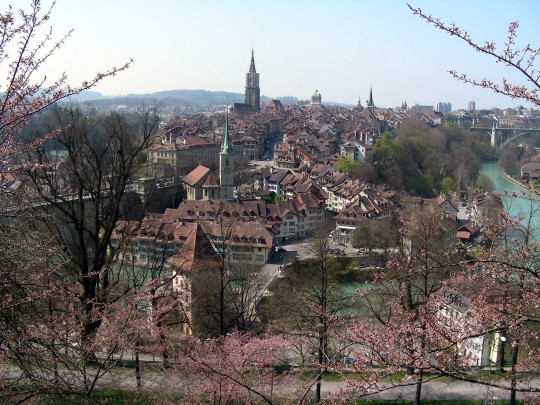
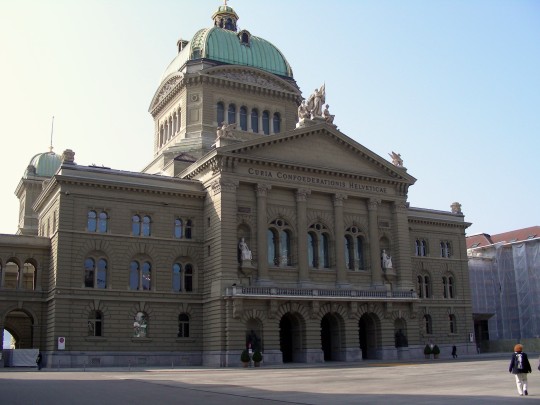
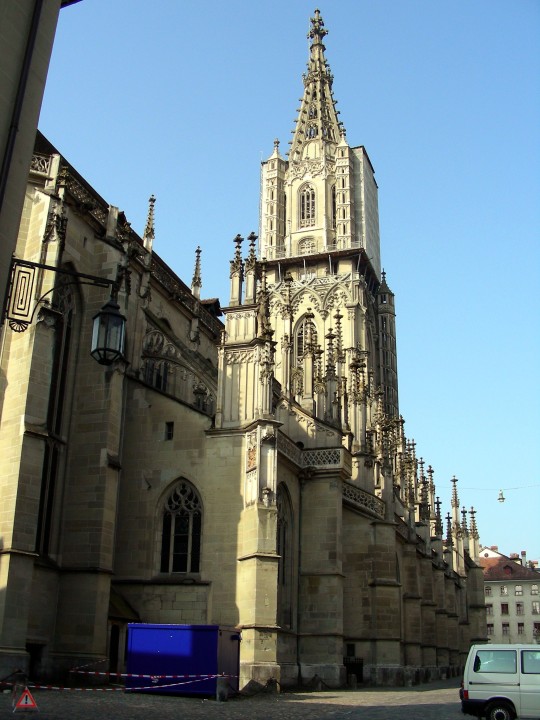
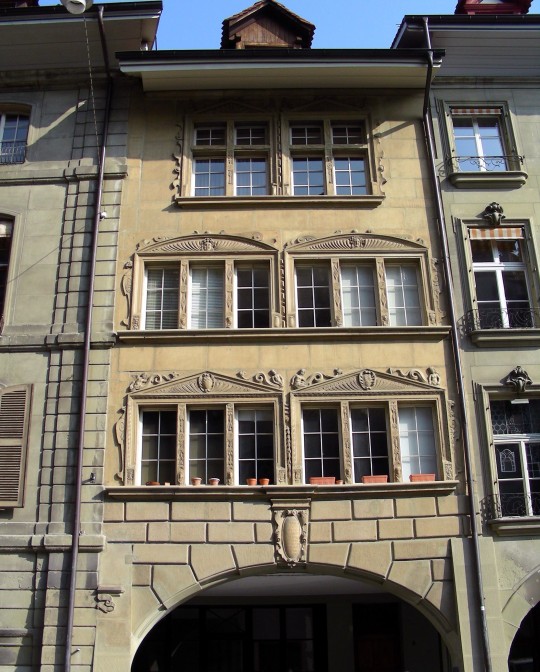


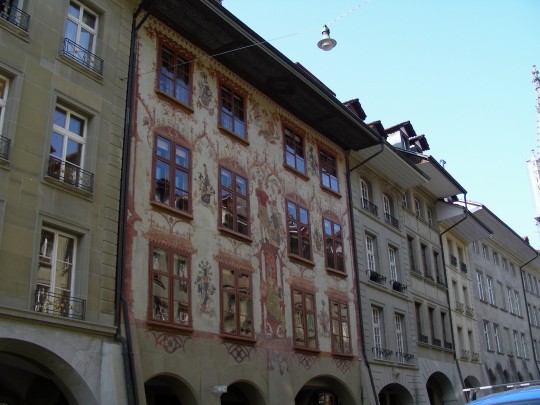
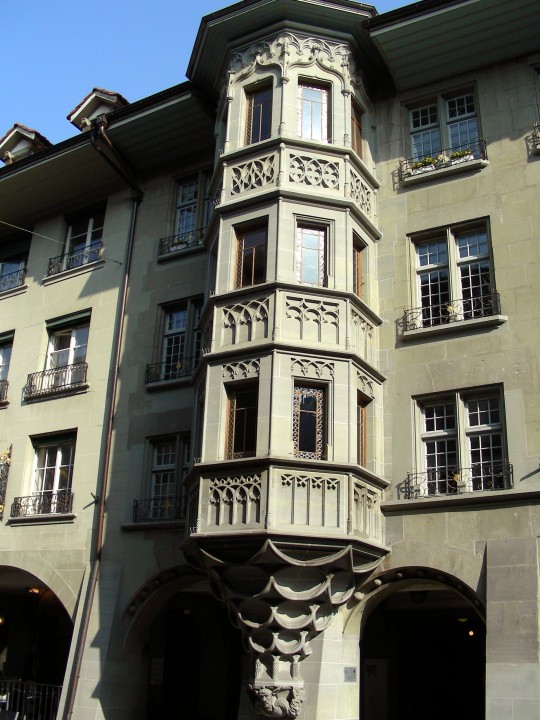

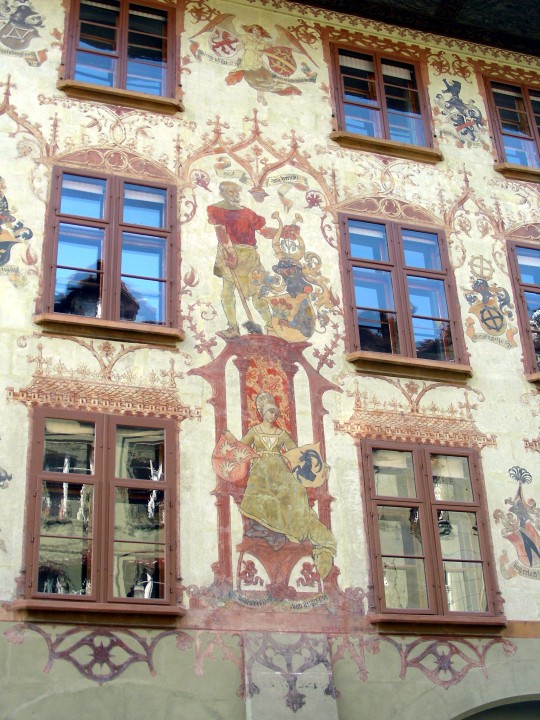


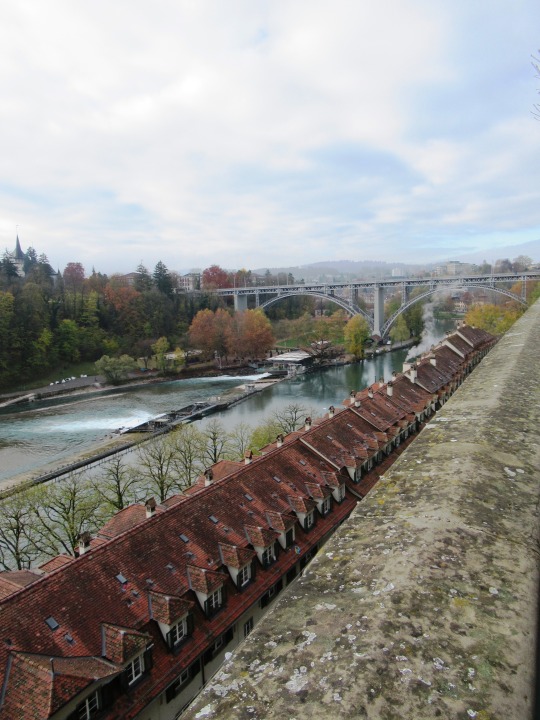
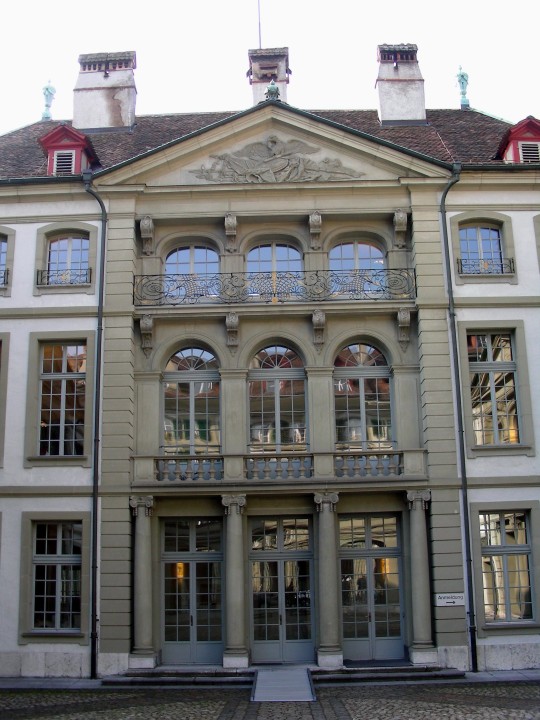
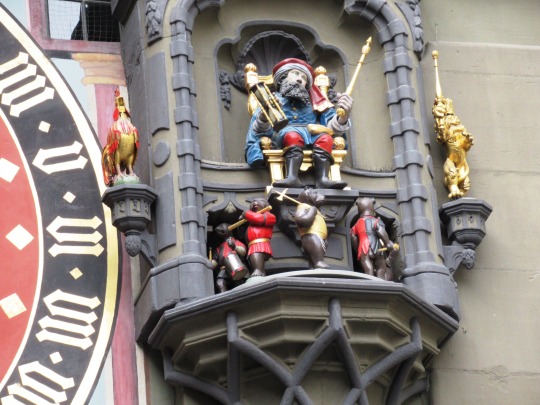
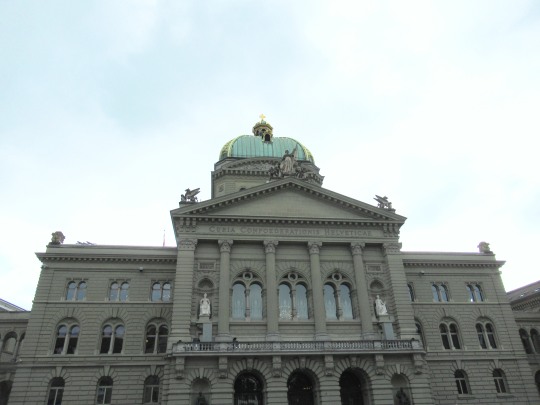

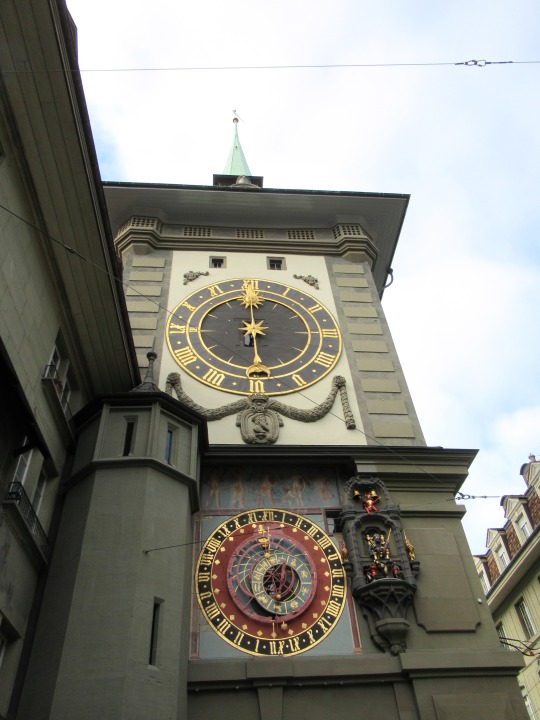
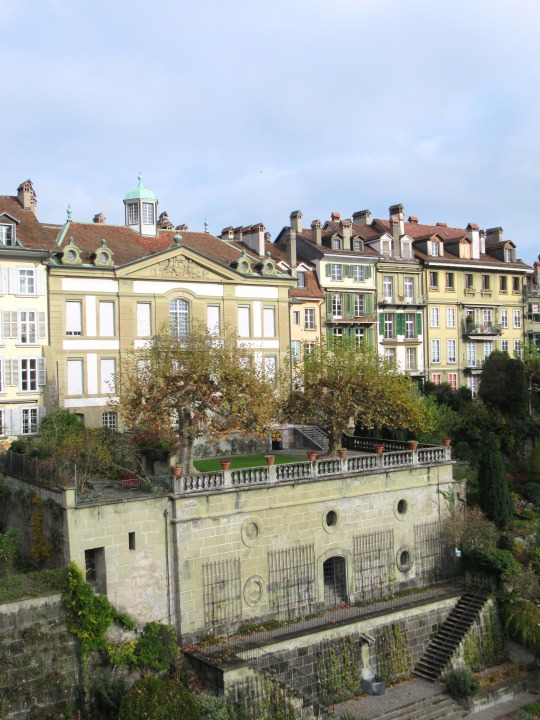
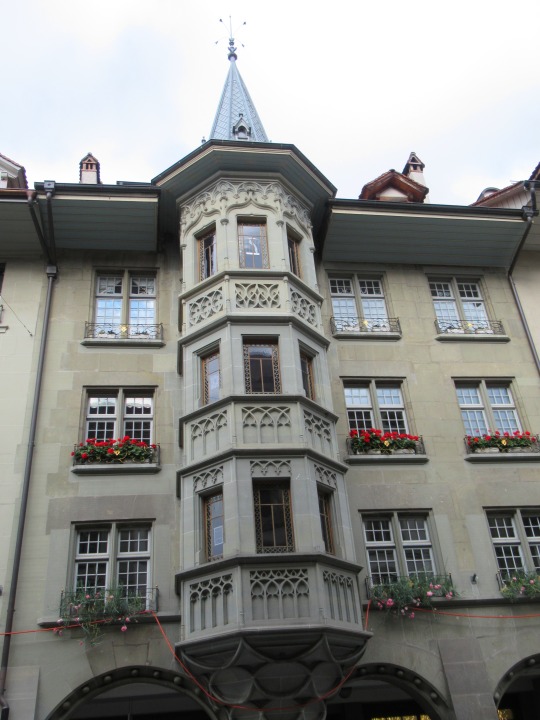

Bern was made the Federal City (seat of the Federal Assembly) within the new Swiss federal state on November 28, 1848.
#Bern#Federal City#28 November 1848#original photography#day trip#Schweiz#Switzerland#Berner Münster#Federal Palace of Switzerland#Bundeshaus#River Aare#architecture#cityscape#downtown#old town#tourist attraction#landmark#Swiss history#175th anniversary#Zytglogge#Bern Minster#fall 2019#Moses Brunnen#fountain#Lauben#arches#Kramg#spring 2009#Erlacherhof#Kramgasse
5 notes
·
View notes
Text
#OTD in Irish History | 28 November:
1727 – William Connolly is unanimously re-elected Speaker of the Irish House of Commons. 1848 – ‘Saturday Review’ Racist Anti-Irish Rant. As Ireland haemorrhaged population via starvation and emigration, it received little support from elements of the English press. 1856 – Birth of Cardinal Patrick O’Donnell near Glenties, Co Donegal. 1863 – Foundation of the Fenian newspaper, “Irish People”;…

View On WordPress
#irelandinspires#irishhistory#OTD#28 November#Achill Head#An Gorta Mor#Arthur Griffith#Co. Mayo#Dublin#England#History#History of Ireland#Ireland#Irish History#Irish War of Independence#Peter Cox Photography#Today in Irish History
10 notes
·
View notes
Note
Hello, Monsieur! I'm sorry for my much questions, but the chance asking you them is simply too overwhelming and nice!
Well, I am interested about your concerts you gave during your live time. When and where - and that all - I mean. Is there a good website with a list or similar?
Good afternoon mon petit élève, never be sorry for asking questions, I enjoy answering them!
As far as I’m aware, there’s no definitive list of my concerts, but I’ve tried to remember when and where I performed during my lifetime for you. The list only includes concerts, not events such as soirées, balls or bazaars… And nor does it include the specific concert halls for it has been too long for me to recall such small details.
My concerts:
11 August 1829 Vienna
18 August 1829 Vienna
17 March 1830 Warsaw
22 March 1830 Warsaw
8 July 1830 Warsaw
11 October 1830 Warsaw
8 November 1830 Wrocław
11 June 1831 Vienna
28 August 1831 Munich
25 February 1832 Paris
20 May 1832 Paris
March 1833 Paris
3 April 1833 Paris
25 April 1833 Paris
15 December 1833 Paris
25 February 1834 Paris
14 December 1834 Paris
25 December 1834 Paris
22 February 1835 Paris
15 March 1835 Paris
4 April 1835 Paris
26 April 1835 Paris
31 March 1837 Paris
3 March 1838 Paris
12 March 1838 Paris
29 October 1839 Paris
26 April 1841 Paris
21 February 1842 Paris
15 January 1843 Paris
17 March 1843 Paris
16 February 1848 Paris
23 June 1848 London
7 July 1848 London
28 August 1848 Manchester
27 September 1848 Glasgow
4 October 1848 Edinburgh
11 notes
·
View notes
Text
Whither Cincinnati’s Erstwhile Wooden Tribe? The Demise Of The Cigar-Store Indian
Throughout the summer of 1888, Cincinnati erupted in celebration of its centennial, marking 100 years since the first settlers pulled ashore here. In the middle of the festivities, an unnamed reporter for the Cincinnati Post [2 July 1888] composed a fantasy in which he imagined all of the wooden cigar-store Indians in town brought to life one midnight. With the temporary gift of movement and speech, the statues gathered on the banks of the river to contemplate the pageant of the past century.
The gist of that fairy tale – that one hundred years of progress had done little to improve on the conditions that existed before the settlers arrived – is irrelevant to our story today. The important fact is the reporter’s estimate of the number of participants:
“The group consisted of about 200 wooden Indians that usually adorn the fronts of the Cincinnati cigar shops.”
Just how many cigar shops did Cincinnati have in 1888? A quick count of that year’s city directory reveals nearly 500 cigar and tobacco shops in a town of 290,000 people. If a large minority of these vendors plunked a wooden native on the sidewalk in front of his shop, it is entirely possible that there were, in 1888, something like 200 wooden statues of Native Americans in Cincinnati.
William C. Smith, in his delightful book, “Queen City Yesterdays,” recalls their ubiquity when he was a child living on Central Avenue:
“Indians were plentiful on the Avenue but they were of the inanimate type, constructed of wood, and stood on pedestals in front of cigar stores.”
With so many statues scattered around town, it makes another item from the Cincinnati Post all the more remarkable. Just 28 years after counting 200 wooden Indians, the Post [12 September 1916] published this squib in its Village Gossip column:
“By the way, what has become of the old cigar store Indian? So rare is he that if any cigar dealer who still keeps an Indian in front of his store will notify me to that effect, I will send or photographer to get a picture of him – I mean the Indian.”
In response to the Village Gossip, several readers directed the Post’s photographer to Nathaniel Aglar’s cigar store on Front Street near Broadway. Mr. Aglar claimed that his wooden sales associate had stood outside his store for 30 years and that the statue was 40 years old when he acquired it.
Twenty years onward, Mr. Aglar’s Indian had apparently disappeared because the Post [5 March 1938] could only locate two wooden Indians still standing outside Cincinnati tobacconists. “Chief Kusnick,” also known for unknown reasons as “Sam Pincus,” stood guard outside John Fugazzi’s cigar shop on East Sixth street and “Chief Mueller” guarded William Mueller’s store on East Fifth Street.
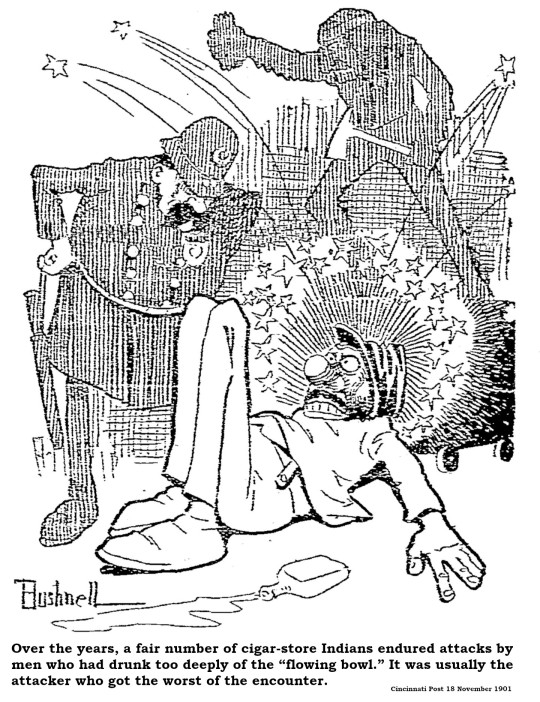
During their heyday, Cincinnati’s cigar-store Indians actively participated in the city’s street life, usually against their will. The local newspapers regularly published accounts along the lines of this item from the Enquirer [30 July 1876]:
“A young man, well known in the West End, went over the Rhine last night and dropped his wealth so freely around among the beer halls that he was soon in a frame of mind to avenge Custer. His first victim was a wooden Indian which was standing in front of a cigar store, innocently pointing people to the fine stock within. The warrior disposed of, the Avenger tried to get in his work on a policeman, whom he mistook for Sitting Bull. But he failed, and to-morrow Judge Lindemann will throw chuck-a-luck with him to see whether it shall be $5 and costs or $10.”
As late as November 1938, police arrested an inebriated waiter for assaulting Chief Mueller, thus ending a tradition of fifty years or more,
It wasn’t only drunks who attacked the statues. In 1848, the Cincinnati Commercial reported that a pack of dogs attacked a wooden Indian mounted outside a cigar store at Third and Sycamore. This must have been among the first such statues erected in the city.
And then there were the practical jokes. On a frosty night in December 1882 Cincinnati Police Sergeant Philip Rittweger discovered that some miscreants had hoisted a cigar-store Indian from its customary perch and dunked it into a horse trough on Freeman Avenue, where it was frozen fast. Sergeant Rittweger telephoned Sergeant James Young of the Oliver Street Station and informed him there was a drowned man in his district and foul play was suspected. Sergeant Young assembled a group of officers and rushed to the scene. On discovering the frozen statue, Young put out a call for Rittweger, who made himself scarce.
The cigar-store Indian began appearing in American cities during the 1840s as steamships began to replace the great sailing ships with their magnificently carved figureheads mounted at the prow. The streamlined steamships dispensed with such decoration, leaving a generation of woodcarvers looking for a new market. As the big sailing vessels were dismantled, woodcarvers found the weather-beaten pine masts to be exceptional material for carving cigar-store decorations. Soon, a painted Indian was as essential to the tobacconist as a red-striped pole was to a barber or three suspended balls to a pawnbroker.
What happened to Cincinnati’s substantial tribe of cigar-store totems? Mostly they disappeared as fashions changed. A sign hanging above the door was more visible than a statue at street level. City ordinances prohibited sidewalk obstructions. And, very importantly, wooden statues in a folk style were becoming quite collectable. As early as the 1930s, Cincinnati newspapers reported collectors paying $500 for an authentic cigar-store Indian.
The Cincinnati Post’s Village Gossip, now writing under a more distinguished byline as “Cincinnatus,” lamented the passing of this tribe [25 June 1936]:
“Cincinnatus used to know many a wooden Indian . . . a friendly, mellow spirit that seemed to summon Cincinnatus into the store to stay awhile, to talk with the proprietor about the price of cabbages and the state of the nation and the way the Reds were going. The unbusinesslike Indian was like an invitation to leisurely loitering in a cigar store which in the Indian’s time was more a club than a business. But what now? Cincinnatus buys his can of tobacco and is quickly on his way again. With the departure of the Indian, cigar stores have gone into mere trade, abandoning romance, philosophy and leisure.”

5 notes
·
View notes
Video
Caroline Hulda Felt Cutter, 1/6th-Plate Daguerreotype, Circa 1848 by Ann Longmore-Etheridge Via Flickr: Copyright Ann Longmore-Etheridge Collection. Caroline Hulda Felt was born 24 April, 1830, in Stow, Middlesex County, Massachusetts. She was the daughter of John Felt (1798-1887) and Huldah Hobart Conant Felt (1803-1861). On 18 April 1850, Caroline married Julius Cutter (1824-1890) of Jaffrey, Cheshire County, New Hampshire. Julius Cutter was born on November 28, 1824, in Jaffrey, Hillsboro, New Hampshire, to Benjamin Cutter and Grata Cutter (born Hunt). He had four siblings: Sarah Augusta Campbell (born Cutter), Adaliza Phelps (born Cutter), Ermina Chamberlin (born Cutter), and Benjamin F. Cutter. Julius and Caroline had two daughters: Emma Maria Cutter Mitchell (1853-1937) and Alice E. Cutter (1857-1916). Caroline died 18 January, 1921, aged 90, in Cambridge, Middlesex County, Massachusetts.
0 notes
Text

Send from Sansgreet Android App. Sanskrit greetings app from team @livesanskrit .
It's the first Android app for sending @sanskrit greetings. Download app from https://livesanskrit.com/sansgreet
Jyotirao Govindrao Phule.
Jyotirao Govindrao Phule (11 April 1827 – 28 November 1890) was an Indian social activist, thinker, anti-caste social reformer and writer from Maharashtra. His work extended to many fields, including eradication of untouchability and the caste system and for his efforts in educating women and oppressed caste people. He and his wife, Savitribai Phule, were pioneers of women's education in India. Phule started his first school for girls in 1848 in Pune at Tatyasaheb Bhide's residence or Bhidewada. He, along with his followers, formed the Satyashodhak Samaj (Society of Truth Seekers) to attain equal rights for people from lower castes. People from all religions and castes could become a part of this association which worked for the upliftment of the oppressed classes. Phule is regarded as an important figure in the social reform movement in Maharashtra. He was bestowed with honorific Mahātmā (Sanskrit: "great-souled", "venerable") title by Maharashtrian social activist Vithalrao Krishnaji Vandekar in 1888.
#sansgreet #sanskritgreetings #greetingsinsanskrit #sanskritquotes #sanskritthoughts #emergingsanskrit #sanskrittrends #trendsinsanskrit #livesanskrit #sanskritlanguage #sanskritlove #sanskritdailyquotes #sanskritdailythoughts #sanskrit #resanskrit #celebratingsanskrit #jyotiraophule #jyotiraophulejayanti #jyotirao #phule #socialactivist #thinker #socialreformer #anticaste #activist #maharashtra #untouchability #savitribaiphule #satyashodaksamaj #pune
#greetingsinsanskrit#sanskritgreetings#sanskrittrends#trendsinsanskrit#livesanskrit#sanskrit#celebratingsanskrit#incredibleindia
1 note
·
View note
Text
De Willemskade in de richting van het Willemsplein, 1956-1961.
De Willemskade werd in 1847 aangelegd op slikken in het zogenaamde Tweede Nieuwewerk. De erven aldaar werden in 1848 uitgegeven. Kade en plein heetten oorspronkelijk, volgens besluit B&W 3 mei 1850, Westerkade en Westerplein. Naar aanleiding van het bezoek van Koning Willem III op 28 juli 1851, werden de namen gewijzigd.
Willem Alexander Paul Frederik Lodewijk (Brussel, 19 februari 1817 – Apeldoorn, 23 november 1890), Prins van Oranje-Nassau, was koning der Nederlanden en groothertog van Luxemburg van 17 maart 1849 tot zijn dood in 1890. Hij was ook hertog van Limburg van 1849 tot de opheffing van het hertogdom in 1866.
Willem was de zoon van koning Willem II en koningin Anna Paulowna. Na de troonsafstand van Willem I in 1840 werd hij de prins van Oranje. Na de dood van zijn vader volgde hij hem op als koning der Nederlanden.
Willem trouwde in 1839 met zijn volle nicht prinses Sophie van Wurtemberg. Zij kregen drie zonen, die allemaal eerder stierven dan hun vader: Willem, Maurits en Alexander. Na de dood van zijn vrouw hertrouwde hij in 1879 met prinses Emma zu Waldeck und Pyrmont. Zij kregen één dochter, Wilhelmina, die hem opvolgde
De foto is gemaakt door Openbare Werken en komt uit het Stadsarchief Rotterdam. De informatie komt eveneens uit het Stadsarchief Rotterdam en van Wikipedia.

0 notes
Text
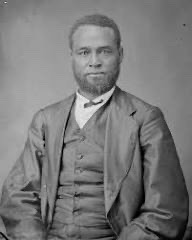
Minister Moses Dickson (April 5, 1824 - November 28, 1901) was born free in Cincinnati. Orphaned by the age of 13, he became a barber to support himself, finding work on steamboats moving through the South and Midwest.
He helped organize two secret abolitionist organizations with like-minded Black men he met while working on the rivers. The Knights of Liberty, founded in St. Louis in 1846, sought to organize enslaved people throughout the South, train them in military tactics, and by 1857, lead them in a massive uprising that never came to fruition. The Order of Twelve, another abolitionist organization, founded in Galena, Illinois, in 1848, included future politicians Alfred H. Richardson and Richard Harvey Cain.
He married Mary Elizabeth Butcher (1848-1891). He continued to work on steamships like the Oronoco and the Nominee and the couple moved from Galena to Saint Paul.
He was likely the first Black business owner in St. Paul, operating Nonpareil Restaurant and Dickson’s Eating Saloon, followed by barbershops in the Fuller House and Winslow House hotels. He was the first teacher of African American students.
He wrote a letter to the Minnesota Weekly Times condemning the SCOTUS’s 1857 Dred Scott Decision. Mary gave birth to their only child. He signed a required free negro bond with former St. Louis mayor John How acting as his guarantor.
After the Civil War, he co-founded Lincoln University with a group of USCT Veterans. He became an ordained minister in the AME Church and opened schools and churches in St. Louis.
He was a delegate at every Republican State Convention in Missouri between (1864-78) and he cofounded the Missouri Equal Rights League. He was an elector-at-large for President Ulysses S. Grant. He was named consul at the Port of Victoria in the Seychelles. He held a leadership role with the Refugee Relief Board that aided the Exodusters.
He was active with the Prince Hall Masons, helping found lodges throughout the Midwest. He married Ina, but the two divorced a few years later. #africanhistory365 #africanexcellence
0 notes
Text
Random birthdates from completely random AU's (according to my notes)
January 1, 1996
November 15, 1987
April 17, 1967
February 3, 1967
March 23, 1990
March 13, 2013
July 21, 2001
April 17, 1970
November 13, 1987
October 18, 1983
March 31, 1986
March 1, 1967
November 20, 1976
March 12, 2016
July 16, 1975
May 12, 1974
August 11, 1942
May 11, 1978
July 12, 1975
July 17, 1998
December 8, 1976
December 9, 2959TA
December 9, 1964
April 27, 1993
March 24, 2990TA
February 10, 2003
January 21, 2985TA
March 12, 1390SR
February 14, 1382SR
August 30, 2008
July 16, 1987
May 16, 1997
April 13, 1968
June 26, 1960
July 1, 1940
June 18, 1987
September 22, 110AC
May 1, 115AC
June 12, 108AC
August 14, 100AC
March 13, 1962
October 17, 77AC
May 27, 1848
June 9, 1809
March 7, 1564
January 15, 1389
May 4, 1969
September 22, 2968TA
September 22, 2890TA
June 29, 1955
March 18, 1950
March 28, 1966
November 18, 1969
December 13, 2020
September 8, 2031
April 6, 4BC
June 7, 2031
May 2, 1982
September 29, 1990
July 5, 2133
May 21, 2110
April 17, 2107
May 12, 2130
June 22, 2130
March 16, 2154
May 12, 2281
1 note
·
View note
Text
On this day in Wikipedia: Friday, 24th November
Welcome, 你好, Bienvenida, Benvenuto 🤗 What does @Wikipedia say about 24th November through the years 🏛️📜🗓️?
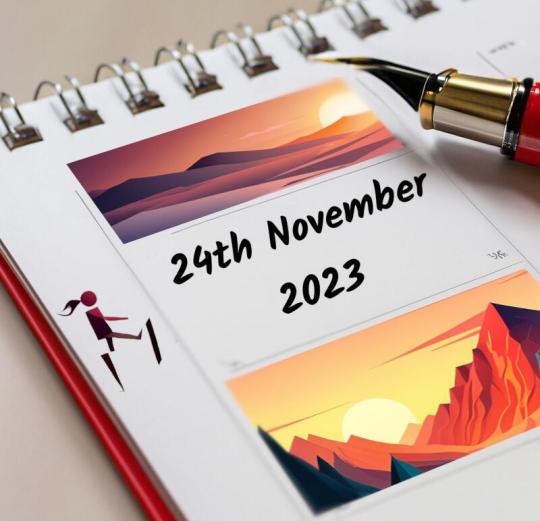
24th November 2022 🗓️ : Event - 2022 Malaysian general election Five days after the general elections which resulted in a hung parliament, opposition leader and former deputy prime minister Anwar Ibrahim is officially named as the 10th prime minister of Malaysia. "General elections were held in Malaysia on Saturday, 19 November 2022. The prospect of snap elections had been considered high due to the political crisis that had been ongoing since 2020; political instability caused by coalition or party switching among members of Parliament, combined with the..."
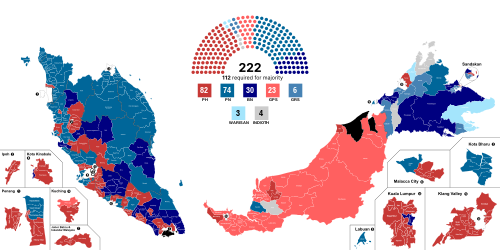
Image licensed under CC BY-SA 4.0? by Twotwofourtysix, 沁水湾, original work by Derkommander0916 under CC BY-SA 4.0
24th November 2017 🗓️ : Event - 2017 Sinai mosque attack A terrorist attack on a Mosque in Al-Rawda, North Sinai, Egypt kills 311 people and injures 128. "At 1:50 PM EET on 24 November 2017, the al-Rawda mosque was attacked by roughly 40 gunmen during Friday prayers. The mosque is located in the village of Al-Rawda east of the town of Bir al-Abed in Egypt's North Sinai Governorate. It is one of the main mosques associated with the Jaririya Sufi order,..."
24th November 2013 🗓️ : Event - Iran Iran signs an interim agreement with the P5+1 countries, limiting its nuclear program in exchange for reduced sanctions. "Iran, also known as Persia and officially the Islamic Republic of Iran (IRI), is a country in West Asia. It is bordered by Iraq to the west and Turkey to the northwest, Azerbaijan, Armenia, the Caspian Sea and Turkmenistan to the north, Afghanistan to the east, Pakistan to the southeast, the Gulf of..."
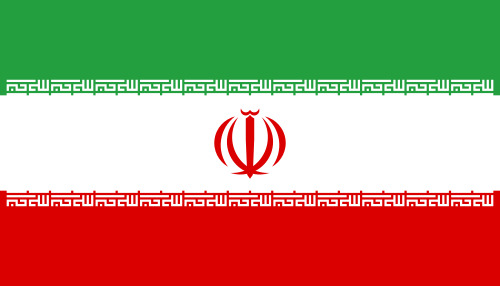
Image by See File history below for details.
24th November 1973 🗓️ : Event - Autobahn A national speed limit is imposed on the Autobahn in Germany because of the 1973 oil crisis. The speed limit lasts only four months. "The Autobahn (IPA: [ˈaʊtoˌbaːn] ; German plural Autobahnen, pronounced [ˈaʊ̯toˌbaːnən] ) is the federal controlled-access highway system in Germany. The official German term is Bundesautobahn (abbreviated BAB), which translates as 'federal motorway'. The literal meaning of the word Bundesautobahn is..."

Image by Qualle, Xavax and Mediatus
24th November 1922 🗓️ : Event - Irish Civil War Irish Civil War: Irish nationalist author Erskine Childers was executed by the Irish Free State for illegally carrying a semi-automatic pistol. "The Irish Civil War (Irish: Cogadh Cathartha na hÉireann; 28 June 1922 – 24 May 1923) was a conflict that followed the Irish War of Independence and accompanied the establishment of the Irish Free State, an entity independent from the United Kingdom but within the British Empire. The civil war was..."

Image by National Library of Ireland on The Commons
24th November 1812 🗓️ : Birth - Xavier Hommaire de Hell Xavier Hommaire de Hell, French geographer and engineer (d. 1848) "Ignace Xavier Morand Hommaire de Hell, often known as Xavier Hommaire de Hell, (24 November 1812 in Altkirch – 29 August 1848 in Isfahan) was a French geographer, engineer and traveller who carried out research in Turkey, southern Russia and Persia...."

Image by Jules Laurens
24th November 🗓️ : Holiday - Earliest day on which Mother's Day can fall, while November 30 is the latest; celebrated on the last Sunday in November. (Russia) "Mother's Day is a celebration honoring the mother of the family or individual, as well as motherhood, maternal bonds, and the influence of mothers in society. It is celebrated on different days in many parts of the world, most commonly in the months of March or May. It complements similar..."

Image by William-Adolphe Bouguereau
0 notes
Text





















Bern was made the Federal City (seat of the Federal Assembly) within the new Swiss federal state on November 28, 1848.
#Bern#Federal City#28 November 1848#original photography#day trip#Schweiz#Switzerland#Berner Münster#Federal Palace of Switzerland#Bundeshaus#River Aare#architecture#cityscape#downtown#old town#tourist attraction#landmark#Swiss history#anniversary#Zytglogge#Bern Minster#fall 2019#Moses Brunnen#fountain#Lauben#arches#Kramg#spring 2009#Erlacherhof#Kramgasse
1 note
·
View note
Text
Jensen's folly and the proof of "No Irish Need Apply" [Part 2]
Continued from part 1. This post was originally published on WordPress in June 2018.
Looking on newspapers.com, I found 3,047,608 matches for the words "no Irish need apply," with even a story about it in the Buffalo paper, The Weekly Economist, in 1843. Now, not all of those portended to ads. [2] Narrowing the search, covering the years of 1800 to 1860, I brought the total to about 113,000. The latter number may be inflated due to false drops since quoting the phrase itself only brings up 158 results, extending it to 1900 gives you about 1,400 results, over 60 of which are listed below. I also got some sources from the Library of Congress's Chronicling America collection of old newspapers, which are included in the below listing of varied ads.
1820s
June 29, 1828 ad in the New York City paper, The Evening Post
July 24, 1828 ad in the New York City paper, The Evening Post
August 8, 1828 ad in the New York City paper, The Evening Post
September 11, 1828 ad in the New York City paper, The Evening Post
October 8, 1828 ad in the New York City paper, The Evening Post
June 8, 1829 ad in the New York City paper, The Evening Post
June 19, 1829 ad in the New York City paper, The Evening Post
June 23, 1829 ad in the New York City paper, The Evening Post
October 27, 1829 ad in the New York City paper, The Evening Post
1830s
April 29, 1830 ad in the New York City paper, The Evening Post, related to the one a few days before
New York Herald attacks No Irish Need Apply adverts on July 30, 1830
1840s
May 18, 1841 ad in the New York City paper, New York Tribune
August 24, 1842 ad in the New York City's New York Tribune
February 7, 1844 ad in the Philadelphia paper, Public Ledger
January 7, 1847 ad in the Philadelphia paper, Public Ledger
April 23, 1847 ad in the Philadelphia paper, Public Ledger
November 4, 1847 ad in the Philadelphia paper, Public Ledger
January 25, 1848 ad in the Philadelphia paper, Public Ledger
October 28, 1848 ad in the Philadelphia paper, Public Ledger
July 16, 1849 ad in the New York City paper, New York Herald, reprinted from days before
1850s
February 25, 1850 ad in the Philadelphia paper, Public Ledger
March 11, 1850 ad in the Philadelphia paper, Public Ledger
August 6, 1850 ad in the Philadelphia paper, Public Ledger
January 13, 1851 ad in the New York City's New York Tribune
February 5, 1851 ad in the Baltimore Sun
March 13, 1851 ad in the New York Daily Herald
April 22, 1851 ad in the Baltimore Sun
July 24, 1851 ad in the Philadelphia paper, Public Ledger
December 31, 1851 ad in the Baltimore Sun, accompanied by another saying they are looking for someone who is white, but not Irish, as a cook
April 13, 1852 ads (top and bottom of image) in the Philadelphia paper, Public Ledger
May 14, 1852 ad in New York City's New York Tribune
June 21, 1852 ad in the Philadelphia paper, Public Ledger
August 26, 1852 ad in the Philadelphia paper, Public Ledger
October 11, 1852 ad in the Philadelphia paper, Public Ledger
December 31, 1852 ad in the New Orleans paper, The Times-Picayune
June 22, 1853, the Lancaster Ledger reports that the New York Herald is being sued for libel for attaching "no Irish may apply" to one of its ads, which the Ledger calls "queer"
June 2, 1853, the New York Herald criticizes "No Irish Need Apply" ads
July 30, 1853 ad in the Philadelphia paper, Public Ledger
February 19, 1854, the New York Herald talks about their ""No Irish Need Apply" advertisers"
March 30, 1854 ad in the Baltimore Sun
October 6, 1854 ad in the West Virginia paper, the Wheeling Daily Intelligencer
April 21, 1855 ad in the Freehold, New Jersey paper, the Monmouth Inquirer
May 18, 1855 ad in Baltimore Sun
September 18, 1855 ad in the Philadelphia paper, Public Ledger
October 17, 1855 ad in the Washington, D.C. Evening Star, likely related.
March 28, 1856 ad in the Baltimore Sun
February 14, 1857 ad in the New York Times
December 7, 1857 ad in New Orleans paper, The Times-Picayune
April 20, 1857 ad in the Baltimore Sun
March 20, 1858 ad in the New York Times
August 17, 1858 ad in the Baltimore Sun
October 1, 1858 ad in the Baltimore Sun, reprinted on October 2 and 4, at least
October 13, 1858 ad in New York Times
May 10, 1859 ad in the New York Times
September 21, 1859 ad in the New York Times
1860s
March 29, 1860 ad in the Brooklyn Daily Eagle
April 3, 1860 ads (here and here) in the Philadelphia paper, Public Ledger
June 8, 1860 ad in the Baltimore Sun, related is ad the day before
August 6, 1860 ad in the Cincinnati Daily Press
August 25, 1860 ad in the Philadelphia paper, Public Ledger
Ad and comment in Columbia Democrat and Bloomsburg General Advertiser (Bloomsburg, Pennsylvania) on March 12, 1864
© 2018-2023 Burkely Hermann. All rights reserved.
Notes
[2] This is apart from mentions of it in 1878 to counter such sentiment (and in 1864), the Guardian (see here, here, here, and here), the Liverpool Mercury in 1854 (here and here), 1855 (also see here, here, here, ), 1857, 1858, 1859, and 1863, along with other mentions in English papers in 1844, 1847, and 1856. A comedy, in the 1850s, was even produced on this subject! In all, there are over 105,000 results for England alone, over 9,000 for Scotland, over 8,000 for Ireland, over 5,000 for Northern Ireland, over 4,700 for Australia, over 1,500 for Wales and almost 1,000 for Canada.
#irish history#irish americans#irish heritage#irish genealogy#newspaper clippings#1860s#1850s#1840s#1830s#1820s#wordpress#19th century
0 notes
Text
De la Restauration à la Commune

"De la Restauration à la Commune" adalah sebuah periode dalam sejarah Prancis yang berlangsung dari tahun 1815 hingga 1871. Periode ini ditandai dengan perubahan sosial, politik, dan budaya yang signifikan, termasuk Restorasi Bourbon, Monarki Juli, Kedua Republik, Kekaisaran Kedua, dan pemberontakan Komune Paris. Periode ini merupakan periode penting dalam sejarah Prancis karena banyak perubahan signifikan yang terjadi selama periode ini, baik dampak positif maupun negatif bagi rakyat Prancis.
I. Restauration de Bourbon (1815-1830)

Restorasi Bourbon dimulai setelah kekalahan Napoleon Bonaparte pada tahun 1815 dan diasingkan ke pulau Eiba, akibatnya Louis XVIII yang baru kembali berkuasa dianggap sebagai raja yang lemah untuk mengendalikan & menertibkan situasi di Prancis. Louis XVIII pun meninggal pada 16 September 1824 dan kekuasaan pun di lanjutkan oleh adiknya Charles X. Charles X berkuasa selama kurang lebih 6 tahun hingga ia akhirnya digulingkan oleh Revolusi Juli/Les Trois Glorieuses pada tanggal 27 hingga 29 Juli 1830.
II. Monarchie de Juillet (1830-1848)

Pada 7 Agustus 1830 Piagam Konstitusi (La Charte) yang disahkan 16 tahun sebelumnya direvisi dan dua hari kemudian Louis Phillipe yang merupakan pemimpin monarki liberal pun naik tahta. Pada tahun 1846 terjadi krisis pangan akibat gagal panen. 2 tahun kemudian terjadi revolusi berikutnya pada bulan Februari 1848, dimulai dari rasa tidak puas karena Louis Phillipe cenderung otoriter. Louis Phillipe pun jatuh dan sistem monarki dihapuskan. Pada bulan November di tahun yang sama terjadi Konstitusi Republik II, dan sebulan setelahnya Louis Napoleon Bonaparte terpilih sebagai presiden
III. La Second République et le Second Empire (1848-1870)

Dimasa kepimpinan Louis-Napoleon Bonaparte pada Republik kedua, terjadi reformasi besar-besaran seperti penghapusan perbudakan dan pengenalan hak pilih untuk sebagian besar penduduk hingga mendapat dukungan besar dari pihak petani. Namun tiga tahun kemudian Louis-Napoleon Bonaparte membentuk Le Second Empire dan dijuluki sebagai Napoleon III. Kekaisaran Otoriter hanya berlangsung hingga 1860 dan pemerintahan pun menjadi liberal
IV. Guerre Franco-Allemande (1870-1871)

Perang Prancis-Prusia terjadi pada tahun 1870 setelah kegagalan diplomatik untuk memecahkan masalah politik dan militer yang rumit antara Prancis dan Kerajaan Prusia. Setelah Prancis menyerang Jerman pada tanggal 19 Juli 1870, Jerman berhasil memenangkan perang dan menaklukkan Paris pada tanggal 28 Januari 1871. Akibatnya, Kekaisaran Kedua Prancis runtuh dan Republik Ketiga didirikan.Perang Franco-Jermane memiliki dampak yang besar terhadap Prancis. Prancis terpaksa membayar ganti rugi sebesar lima miliar franc, kehilangan wilayah Alsace dan Lorraine, dan mengalami kerusakan parah pada ekonomi dan infrastruktur negara. Perang ini juga menjadi pemicu terjadinya Perang Dunia I beberapa dekade kemudian, karena membuat Prancis merasa terancam oleh kekuatan militer Jerman yang semakin besar.
V. La Commune de Paris (1871)
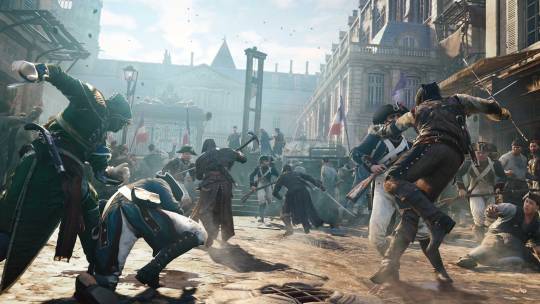
La Commune de Paris, atau yang lebih dikenal dengan sebutan Komune Paris, adalah sebuah gerakan sosialis radikal yang berlangsung di Paris, Prancis pada tahun 1871. Gerakan ini berawal setelah kekalahan Prancis dalam Perang Franco-Prusia dan pengepungan kota Paris oleh pasukan Jerman. Pada tanggal 18 Maret 1871, rakyat Paris yang dipimpin oleh para buruh, pekerja, & kaum sosialis, melakukan pemberontakan terhadap pemerintah Prancis yg dipimpin oleh Adolphe Thiers. Mereka membentuk pemerintahan sendiri, yang dikenal dengan nama Komune Paris.Tujuannya adalah untuk memperjuangkan kebebasan, persamaan, dan solidaritas sosial melalui penghapusan kelas dan kekuasaan kapitalis. Pada awalnya, pemerintah Prancis menolak untuk mengakui pemerintahan baru ini dan menyatakan perang terhadapnya. La Commune de Paris terlibat dalam pertempuran dengan pasukan Prancis selama beberapa minggu. Komune Paris juga berusaha untuk memperluas pemerintahannya ke seluruh Prancis, tetapi upaya ini akhirnya gagal. Selama 72 hari kekuasaannya, La Commune de Paris telah melakukan sejumlah reformasi dan inisiatif radikal, termasuk menghapuskan perbudakan upah, membagi tanah milik gereja dan negara kepada rakyat miskin, dan membangun sistem pendidikan dan kesehatan gratis.Pada 21 Mei 1871, pasukan pemerintah Prancis menyerbu Paris dan menumpas pemerintahan Komune dengan kekerasan. Ribuan warga Paris dibunuh dalam serangan tersebut, dan banyak lagi yang ditangkap dan dijatuhi hukuman mati atau tordipenjara.Meskipun La Commune de Paris hanya berlangsung selama beberapa bulan, gerakan ini menjadi inspirasi bagi banyak revolusioner sosialis dan komunis di seluruh dunia. Pemerintahan Komune Paris dianggap sebagai sebuah upaya awal dalam menciptakan masyarakat yang lebih adil dan merata bagi seluruh rakyat.
1 note
·
View note
Text
Caroline Anderson-First African-American Physician
Caroline Still Anderson was one of the first African-American women to become a physician. She was born on November 1, 1848 in Philadelphia, Pennsylvania. Her parents were Letitia and William Still, two leaders in the abolitionist movement. William Still played an important role in the Underground Railroad of Philadelphia.

Caroline attended several prominent schools in Pennsylvania, as her father believed in a good education for women, and his business in the coal industry provided well for the family.
At the age of 19, Caroline was the only black student in her class at Oberlin College to graduate with a bachelor’s degree. She was also the first black woman to be elected as president of the college.
On December 28, 1869, Caroline married Edward Wiley, a former slave and graduate of Oberlin College, at the age of 21. The couple had five children, but only three survived to adulthood. Edward died in 1873 from a sudden illness In 1880, Caroline remarried Matthew Anderson, a minister and fellow alumni of Oberlin College, as well as Yale University and Princeton University.
After working as a teacher of music and elocution, Caroline went on to complete an internship in medicine at New England Hospital for Women and Children in Boston. After some opposition because of her race, Caroline was eventually appointed to a position at the hospital based on her work and talent as a physician. She went on to practice medicine at Quakers Institution in Philadelphia.

In her later years, Caroline became an activist working for organizations in Philadelphia that supported women’s rights and racial equality. She was instrumental in establishing the first black Young Women’s Christian Association (YWCA) in Philadelphia. Caroline continued to work tirelessly to help the black community in Philadelphia, until her death in 1919. She was also recognized for her efforts by W.E.B. Du Bois.
She died at the age of of 71 from stroke complications, and was buried in Eden Cemetery in Collingdale, Pennsylvania.

#Caroline Still Anderson#african-american history#physician#Pennsylvania#underground railroad#abolitonists#Philadelphia#slavery#civil war#fugitive slave law#juneteenth#juneteeth2020#New England Hospital#racial inequality#women's rights#civil rights movement#civil rights history#w.e.b. du bois#Quakers#black lives matter#blackl lives matter movement#Emancipation Proclamation
1K notes
·
View notes
Text
#OTD in Irish History | 28 November:
#OTD in Irish History | 28 November:
1727 – William Connolly is unanimously re-elected Speaker of the Irish House of Commons. 1848 – ‘Saturday Review’ Racist Anti-Irish Rant. As Ireland haemorrhaged population via starvation and emigration, it received little support from elements of the English press. 1856 – Birth of Cardinal Patrick O’Donnell near Glenties, Co Donegal. 1863 – Foundation of the Fenian newspaper, “Irish People”;…

View On WordPress
#irelandinspires#irishhistory#OTD#28 November#Achill Head#An Gorta Mor#Arthur Griffith#Co. Mayo#Dublin#England#History#History of Ireland#Ireland#Irish History#Irish War of Independence#Peter Cox Photography#Today in Irish History
4 notes
·
View notes
Text

Send from Sansgreet Android App. Sanskrit greetings app from team @livesanskrit .
It's the first Android app for sending @sanskrit greetings. Download app from https://livesanskrit.com/sansgreet
Jyotirao Govindrao Phule.
Jyotirao Govindrao Phule (11 April 1827 – 28 November 1890) was an Indian social activist, thinker, anti-caste social reformer and writer from Maharashtra. His work extended to many fields, including eradication of untouchability and the caste system and for his efforts in educating women and oppressed caste people. He and his wife, Savitribai Phule, were pioneers of women's education in India. Phule started his first school for girls in 1848 in Pune at Tatyasaheb Bhide's residence or Bhidewada. He, along with his followers, formed the Satyashodhak Samaj (Society of Truth Seekers) to attain equal rights for people from lower castes. People from all religions and castes could become a part of this association which worked for the upliftment of the oppressed classes. Phule is regarded as an important figure in the social reform movement in Maharashtra. He was bestowed with honorific Mahātmā (Sanskrit: "great-souled", "venerable") title by Maharashtrian social activist Vithalrao Krishnaji Vandekar in 1888.
#sansgreet #sanskritgreetings #greetingsinsanskrit #sanskritquotes #sanskritthoughts #emergingsanskrit #sanskrittrends #trendsinsanskrit #livesanskrit #sanskritlanguage #sanskritlove #sanskritdailyquotes #sanskritdailythoughts #sanskrit #resanskrit #celebratingsanskrit #jyotiraophule #jyotiraophulejayanti #jyotirao #phule #socialactivist #thinker #socialreformer #anticaste #activist #maharashtra #untouchability #savitribaiphule #satyashodaksamaj #pune
#greetingsinsanskrit#sanskritgreetings#sanskrittrends#trendsinsanskrit#livesanskrit#sanskrit#celebratingsanskrit#incredibleindia
0 notes